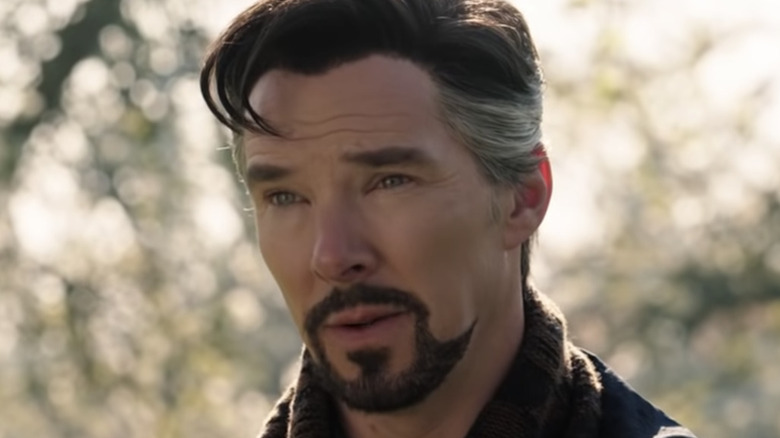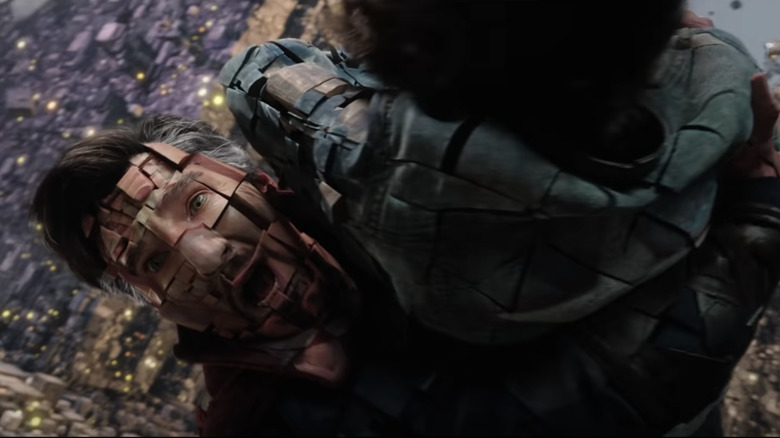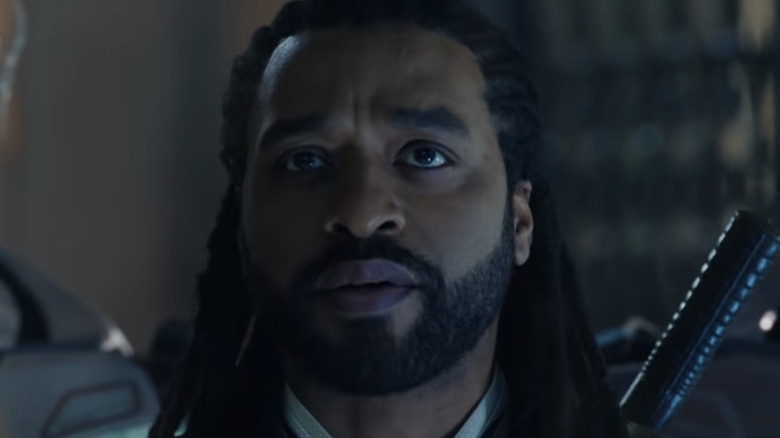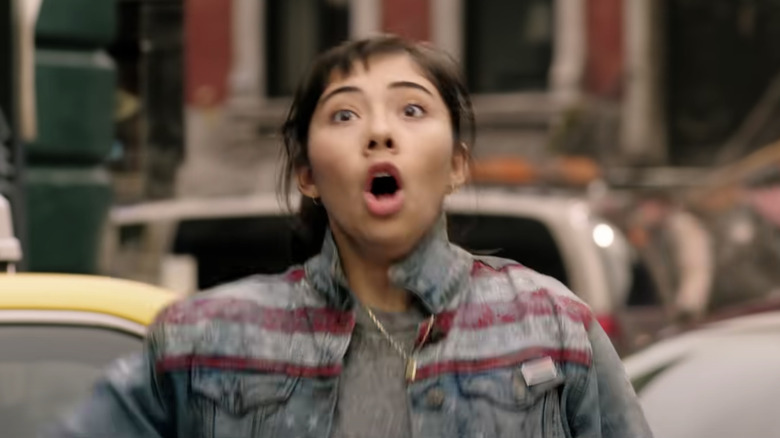How The Doctor Strange In The Multiverse Of Madness Trailers Lied To Us
Contains spoilers for "Doctor Strange in the Multiverse of Madness"
At this point, savvy MCU fans know not to take the trailers released by Marvel Studios, Disney, and (in Spider-Man's case) Sony at face value. Studios don't want audiences to figure out entire storylines based on trailers alone, and so outright manipulating trailers has grown into a common practice in recent years as IP-driven movies seek to hide character reveals and plot twists (see "Spider-Man: No Way Home") from fans until they actually sit down in the theater to watch the movie. From editing characters out of scenes to using dialogue or shots that don't even make it into the final theatrical cut — the people who market these movies will do just about anything to lie to fans about how the actual film takes shape.
The same has once again proven true for Marvel Studios' latest theatrical release: "Doctor Strange in the Multiverse of Madness." Here's every time the trailers lied to us.
Stephen Strange doesn't cast a multiverse-breaking spell
The teaser and official trailer for "Doctor Strange in the Multiverse of Madness" strongly imply that the events of the movie occur as a result of Doctor Strange's spell gone wrong from "Spider-Man: No Way Home," or that Strange might attempt another spell that shatters the border between realities in his solo movie. This proved a classic misdirect, since the inciting incident for this film isn't a Doctor Strange spell of any kind!
Marvel Studios executive Kevin Feige noted at the film's world premiere, the final episode of "Loki" provides the singular event that makes the multiversal problems at hand in Strange's latest two MCU appearances possible (via YouTube). If anything, Wanda meddles more in the multiverse to start the movie than Strange himself, as she desperately searches for a way to take herself to a universe where she can live in peace with her children.
The film's teaser trailer uses lines from the most recent "Spider-Man" movie to imply that this film's events result from all the different Spider-Man characters crashing into Earth-616 during the Spidey three-quel. Again, not at all the case. Strange only gets involved in this round of multiversal madness after America Chavez falls right into his lap with a dead alternate version of himself and a monster sent by Wanda in hot pursuit.
Mordo and The Illuminati are not a major part of the film
The first "Doctor Strange" movie distinctly sets up Karl Mordo (Chiwetel Ejiofor) as Strange's main adversary after Dormammu and Kaeacillius are defeated. Mordo, of course, does appear in "Doctor Strange in the Multiverse of Madness" — but not at all in the way fans expected. Without context, trailers for the movie certainly make it seem as if Strange causes irreparable harm to the main MCU universe, inciting Mordo to re-emerge and punish his ex-friend for the so-called desecration of reality. Mordo's lines from the teaser trailer identifying Strange as the universe's greatest threat do ring true, but not at all in the way audiences might expect.
Strange only meets Mordo again after traveling to Earth-838 with America and seeking out that universe's Sorcerer Supreme: Mordo, who works with the Illuminati. The Illuminati explain to Strange that they killed their universe's version of Strange after the defeat of Thanos because he was such a liability for the stability of the multiverse.
While the Illuminati's emergence makes for an interesting sequence, Strange and America spend comparatively little time with them. Wanda tears the Illuminati — Charles Xavier and Reed Richards included — to shreds with relative ease, sending Strange and Earth-838's Christine directly into Sinsister Strange's sanctum. All in all, Patrick Stewart's screen time in the movie is barely longer than the trailers themselves.
Trailers hide America Chavez's importance to the multiverse
Aside from Strange and Wanda, America Chavez may receive the third-most amount of screen time of any character by the end of the film's 126-minute runtime. Audiences may not have guessed that from trailers, though; America is largely seen in the background of shots or in motion, without any real character introduction in the film's official teaser or main trailer.
Of course, Marvel Studios and Disney likely had their reasons for holding back this brand-new character: America's powers and the details of how she meets Strange and Wong in the first place are spoiler-heavy. Additionally, this movie is America's initiation to the MCU. Casual moviegoers catching the trailer probably would not have known the character. Anyone not already familiar with Netflix's "The Babysitters Club" could be forgiven for not knowing teenage actress Xochitl Gomez before this movie, too.
Even so, America makes for a dominating force in the movie as her powers make her the only known person across the MCU multiverse capable of shifting between realms at will. Wanda — and in the film's climax, Strange himself — uses the Darkhold to dreamwalk via other versions of themselves in the multiverse, but they need America to bodily make that same leap.
By the film's end, America finds control over her multiverse-hopping abilities and seems to have found a temporary home at Kamer-Taj in the 73rd universe she's visited. The character will likely play a significant role in MCU projects to come, and she's easily the most important of the film's many character introductions. You wouldn't know it by the trailers, though.



